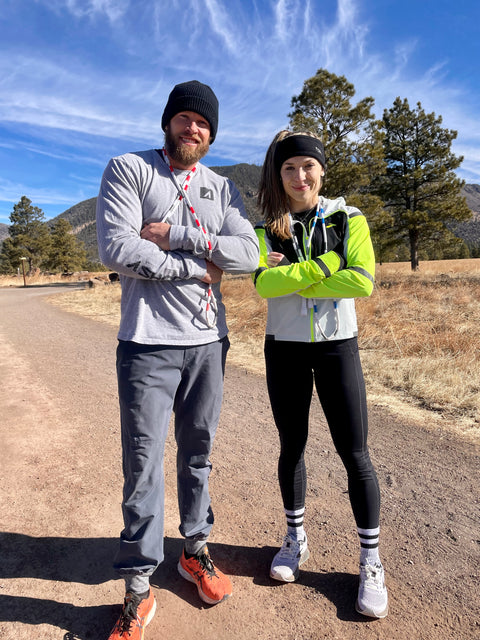
Jump Rope Meets Running with RYAN HALL
What a day!
I jumped (pun intended) at the chance to meet up with Ryan Hall, 2-time Olympian & first American to break an hour in the half-marathon. We met at Buffalo Park in Flagstaff, Arizona for a morning of training and, honestly, we couldn't help but get a little sidetracked talking so passionately about our sports (it drove my videographer crazy, haha). While we were at the park I even got to jump for some of Ryan's friends who happened to be on their morning walks. I shared some jump rope skills with Ryan (who is a natural with the rope) and learned some tips from one of the best runners in the US to improve my running technique. My days from high school cross country and track came rushing back to me, and, though slightly post-traumatic (jk jk)... they mostly gave me a lot of motivation to look closer at the breakdowns between our sports.
What is super interesting is the amount of crossover. Jump rope and running both have similar mechanics and they can be an interchangeable way of endurance training. I am a bit bias to the rope largely because of the smaller amount of space that is required compared to running, but there is something so special about moving in the fresh air, especially in the high-altitude training that Flagstaff has to offer. Plus, both activities are incredibly low-cost. Maybe you have heard the statistic out there that 10 minutes of jump rope is equal to 30 minutes of jogging, but in terms of low, medium, or high intensity training and calorie expenditure, they are pretty even.
So which one is better? Well, both running and jumping are economical and efficient forms of exercise. They both work wonders in terms of muscular endurance, coordination, and body fat reduction, among others. Jump rope and running are activities with a bit of impact. Proper technique can greatly reduce those impulses on your joints and even increase bone density and range of motion, but it is something to be aware of when first picking up either activity. Make sure to gradually increase training time and intensity when first starting out to avoid over-training and injury.
Whether you choose to run, jump, or alternate the two, it's safe to say that training goes hand-in-hand for both. After my session with Ryan and breaking down his methods of training, there are so many similar movements that I do in my jump rope practice, including the dynamic warm-ups prior and the static cool-downs after.
I have looked to running for that extra training push all of my life but, I still cannot deny the creativity of the rope that always pulls me back in. Enjoy this fun episode of our interaction and until next time, HAPPY JUMPING!
*Special thanks to Brooks Running & the #MakeARunAtIt campaign for sponsoring me for this episode!




Comments (0)
There are no comments for this article. Be the first one to leave a message!